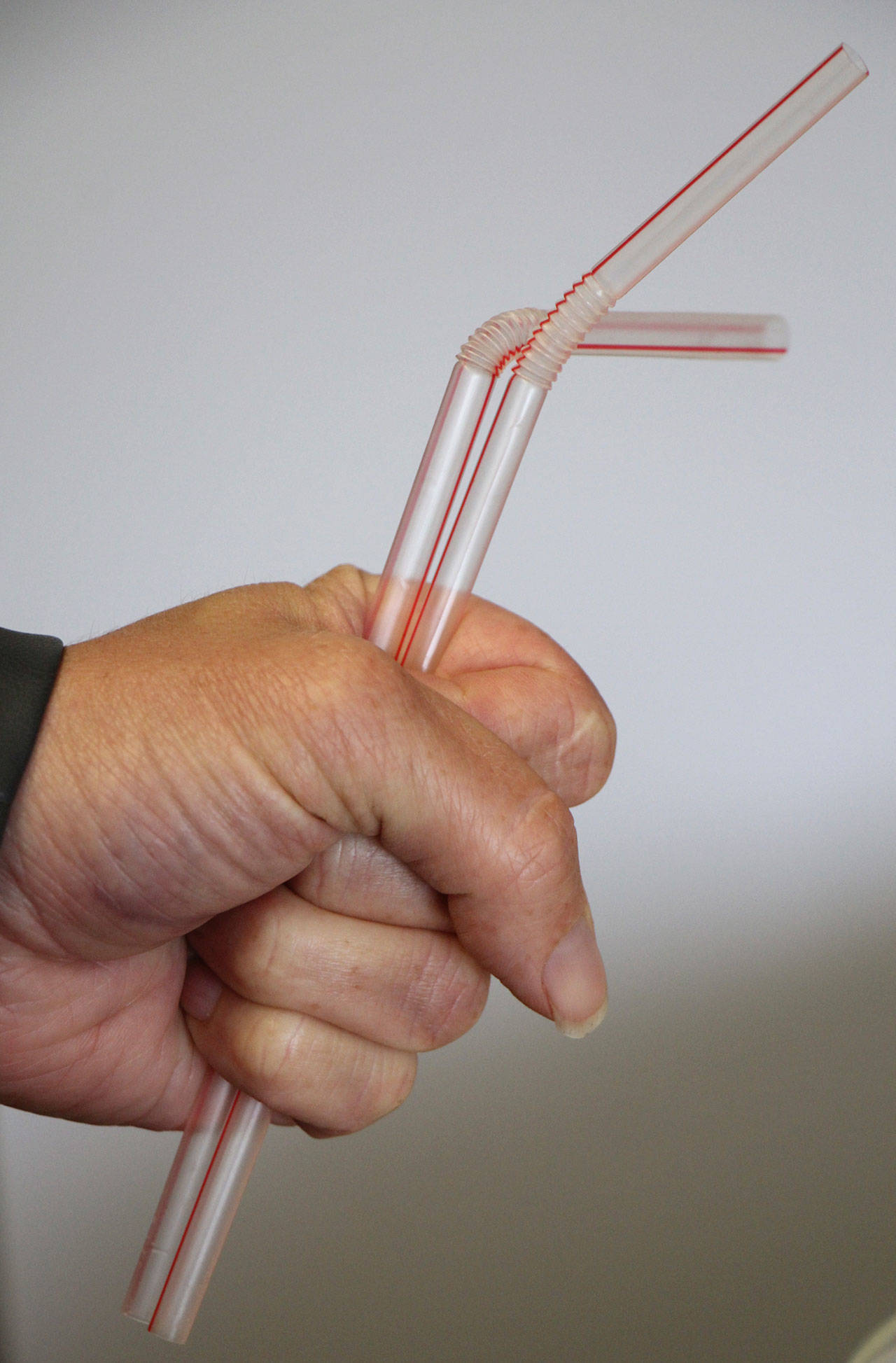San Juan County environmental advocates have a simple solution for people to “stop sucking” at reducing waste: ditch the plastic straws.
“Nobody really needs a straw,” said Karin Roemers-Kleven, chairwoman of the San Juan County Marine Resources Committee. “It’s the easiest thing to take out of the environment.”
County residents are joining a global trend to reduce the plastics overrunning landfills and oceans around the world by encouraging local restaurants to voluntarily replace single-use plastic straws and utensils with materials that will disintegrate into natural elements.
Plastics leach toxins and take years to break down, according to materials for this voluntary county campaign. The leakage, as well as deteriorated tiny fragments of plastic, are often found inside animals, as well as human food.
So far, staff from 10 restaurants on San Juan Island, three on Orcas and 14 on Lopez have registered for the campaign, which is run by the county staff, MRC, Friends of the San Juans and local recycling centers.
The U.S. Environmental Protection Agency reports that roughly 33 million tons of plastics were generated in the United States in 2014, while only about 9 percent was recycled. That means the majority of that plastic ended up in landfills and oceans. Almost 80 percent of trash in the ocean, estimates the EPA, originates on land.
That includes the plastics found in the San Juans, said Roemers-Kleven.
“Plastics are forever; plastics flow with the current and come to our beaches,” she explained.
The campaign named “The Last Straw in the San Juans” is part of a gradual plan to eliminate plastics across the county, according to San Juan County Public Works’ Mark Herrenkohl.
“We’ve been successful doing it in small steps,” said Herrenkohl. “I think you go further that way than trying to do it all in one fell swoop.”
These “small steps” started in 2010 when the county and town councils banned take-out styrofoam containers, then single-use plastic bags last year. Now the focus is on plastic straws and utensils, not through a county ordinance, but freewill.
“The county is reluctant to create rules and put restraints on businesses and really encouraged us to look for ways to get voluntary involvement in the program,” said Roemers-Kleven.
Herrenkohl said the success of the campaign will be reviewed next year to determine if a government mandate is necessary, but he and Roemers-Kleven are betting on the power of social influence.
“We’re riding the national and international wave of attention [to eliminate plastics],” said Roemers-Kleven. “Through a wave of marketing and discussion, people are changing behaviors already.”
Roemers-Kleven estimated that about 85 percent of the San Juan Island business owners she asked to omit plastic straws on June 25 had already done so on their own volition.
Plastics’ negative effects on the environment have received international attention, like viral footage of biologists removing a plastic straw from a sea turtle’s nose and last month’s National Geographic cover story, which featured a photo of a plastic bag that mirrored an iceberg.
National companies, like Alaska Airlines, and other municipalities, such as Malibu, California, have already begun ending the circulation of single-use plastic straws. In Seattle, the plastic straws and utensils ban took effect on July 1. On July 9 Starbucks announced it will eliminate the company’s global use of straws by 2020.
Business owners who participate in the county voluntary plastic straw and utensil ban receive free campaign marketing materials, including table tents and stickers for doors and windows. The stickers, said Herrenkohl, are the only campaign material made of plastic, which is recycled.
A map on www.laststraw-sanjuans.org serves as both free advertising for restaurants and a resource for customers looking for businesses that match their environmental outlook, said Roemers-Kleven.
Instead of plastic straws and utensils, campaign sponsors advocate using paper or other materials that will disintegrate into natural elements. According to the website for Aardvark, a company recommended by the campaign, its paper straws cost only a cent more than the plastic alternatives and break down in 30-60 days.
In comparison, a website for an environmental advocacy group called Ocean Conservancy states plastic straws could spend several hundreds of years in landfills, though the site provides no scientific evidence.
While paper straws can cost slightly more than plastic, Roemers-Kleven explained that many local restaurant employees have stopped serving straws in every drink, which saves both money and resources.
Not creating waste, added Roemers-Kleven, is the best way to prevent it.
“Just recycling isn’t going to do it,” said Roemers-Kleven, “we really have to reduce our use.”
For more information and to sign up for the campaign, visit www.laststraw-sanjuans.org.




